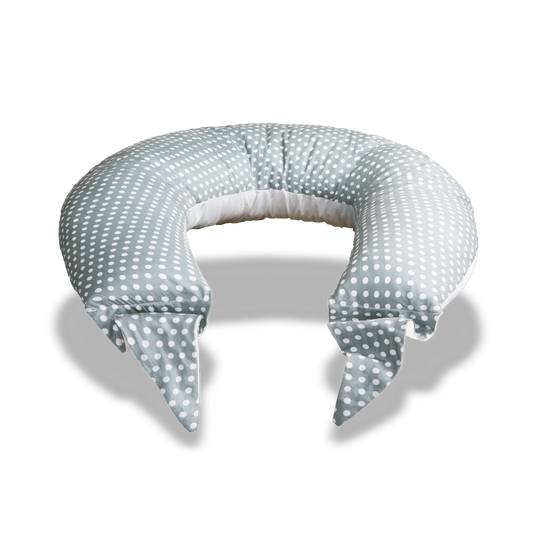The Doctor Answers is the column in Koala Babycare to inform, respond and help all mothers. Every month, doctors, professionals and experts in the sector shed some light using simple yet professional words on topics related to early childhood and the world of motherhood.
In this episode, gynaecologist Ambra Garretto tells us about different types of birth.
Babies can come into the world through different types of birth, depending on the situation. Natural childbirth remains the most common method. The WHO promotes it as the preferred method, unless the situation requires intervention in another way, i.e., caesarean section or induced delivery.
Gynaecologist Ambra Garretto from Milan tells us about the different kinds of childbirth in an interesting and comprehensive video article.
Premature birth
A full-term birth occurs after the 37th week of pregnancy. If the baby is born before 37 weeks, the baby is premature. There are, however, different degrees of prematurity.
If a baby is born between 32 and 37 weeks, this is known as Moderate to Late Preterm. Most babies born after 34 weeks are able to breathe on their own and do not need respiratory assistance, so they do not need to be intubated.
Natural birth
Natural childbirth is the most common type and is promoted by the World Health Organisation. It occurs vaginally at about the 40th week, along with the contractions. It is strongly encouraged because it has definite advantages for the health of both mother and child.
Babies delivered vaginally tend to have fewer breathing problems. The child adapts slowly to the transition from intrauterine to extrauterine life.
Its little lungs will be able to get rid of part of the water that has accumulated in the mother's abdomen between her pelvic floor muscles. It will then make its first little wails when emerging from the mother's vagina.
For the mother, complications aside, it is definitely the best type of birth because the postnatal recovery is much shorter, there are no surgery-related risks, and the infection rate is lower.
They can leave hospital sooner, and the recovery is almost immediate: the mother will be able to get on with a normal life, with a few adjustments of course!
What happens in a natural birth?
A natural birth passes through four phases.
The prodromal or preparation phase, in which contractions start, and at this stage they are irregular. Then comes the loss of the mucus plug and the waters break, i.e., the rupture of the amniotic membranes.
At this point, the dilating phase begins, i.e., the actual labour, in which the cervix dilates, and the baby prepares to come out into the birth canal.
The third phase is the expulsion phase when the baby is born, while the last, called the afterbirth, is the expulsion of the placenta, which occurs after about twenty minutes.
In some cases, the rupture of the amniotic membranes comes before labour. In this case, we talk of "premature membrane rupture".
Caesarean births
In some cases, it is absolutely necessary to give birth by caesarean section, i.e., surgical delivery of a baby through an incision made in the mother's abdomen.
It is not the first choice, so in the absence of complications it is not recommended because there it means the baby has a sudden transition from inside to outside the mother's body. This means that the baby has less time to adapt to the change.
As this is a surgical procedure, it inevitably has its associated in terms of haemorrhage and anaesthetics.
However, there are times when it is advised, such as when the mother or baby is in distress. For example, in situations of arrested labour or breech, i.e., when the baby is positioned bottom-down instead of head-down. In the breech position, the baby would struggle to come out naturally.
There are cases of women requesting a caesarean birth, but we are currently trying to limit this as much as possible.
A caesarean section can be planned with your gynaecologist when a spontaneous birth is not advisable, or it can be performed urgently if labour is already underway, and the health of the mother and baby is at risk.
Induced birth
There are situations when an induced labour is necessary. Inductions can be carried out for health reasons or otherwise.
Induced labour is necessary in cases of late-term pregnancy, i.e., when the delivery goes beyond the due date by several days. The number of days varies from clinic to clinic, but approximately after 10 days.
Labour is induced when the baby shows no signs of wanting to come out of the mother's womb, when there are no contractions. The risks of staying in the mother's body longer are greater than inducing labour and delivering the baby.
Induction due to health reasons takes place before the end of pregnancy in the face of a condition that poses a health risk to the child and mother. Maybe the child has a health condition, such as stunted or restricted growth, or perhaps the mother has pre-eclampsia, diabetes or cholestasis.
These conditions make induced birth necessary for the baby's and mother's wellbeing, and for the success of the whole pregnancy.
The type of birth your baby will have depends on several factors. If the pregnancy proceeds smoothly without complications, your baby will be born naturally.
Dr Ambra Garretto – Gynaecologist
Dr Ambra Garretto is a doctor specialising in Obstetrics and Gynaecology. A graduate of the Università degli Studi di Milano in 2008, she completed her medical training at Ospedale San Paolo di Milano. Dr Garretto loves being both a mother and a doctor!








